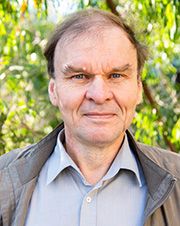Digital rock under stress
OR
SEG members, view the course for free!
Format: Virtual Webinar. 45 min. presentation followed by 15 min. Q&A
An optional post-lecture workshop will immediately follow each lecture for expanded Q&A and networking
Session 1, Tuesday, April 11, 2023, 10 am to 11 am Perth Time
Session 2, Tuesday, June 27, 2023, 5 pm to 6 pm Perth Time
SEG Members Free Access Details
Two live sessions are completed. Please scroll down to watch the videos from the recordings below. SEG members, view the course for free!
Abstract
Modelling physical properties of rocks based on microstructure derived from X-ray microtomographic images (known as digital rock physics) is an important technology in geophysical rock characterization. However, these images are most commonly obtained at room pressure and temperature conditions. Consequently, most digital rock physics models are not representative of the rocks at depth.
Reservoir rocks are at such depth that they experience high stresses and temperatures. The thermodynamic properties of the fluids inside the reservoir are pressure and temperature dependent, therefore transport properties are also temperature and pressure dependent. Moreover, it is well established that elastic rock properties of rocks are strongly affected by stress and/or fluid distribution. Thus, in order to acquire realistic pore network structures and fluid distributions (including, but not limited to, residual saturation) and to reliably estimate transport and elastic properties from micro images, rocks with fluids inside have to be imaged at reservoir pressure and temperature conditions.
In this lecture, we will discuss the ways how to obtain 3D images under elevated temperature and stress conditions, as well the challenges with the imaging and further image processing. Finally, we will provide some results to demonstrate how microstructure of the rocks can be link to transport and elastic properties of rocks measured on bigger samples.
The lecture maybe useful to rock physicist, petrophysics, and reservoir engineers.
Your Instructor

Maxim Lebedev is a Professor at Edith Cowan University, Australia. Maxim was awarded BS, MS and PhD degrees from the Moscow Institute (State University) of Physics and Technology in Russia. He has over 30 years of research experience in physics, material science and rock physics working at leading research organizations in Russia, Japan, New Zealand, and Australia. For more than eight years Maxim was actively involved in the pioneering research on the Aerosol Deposition method at the National Institute of Advanced Industrial Science and Technology, Japan, in which he developed a unique way to deposit ceramics at room temperature. He joined Curtin University in 2007 and became the head of the experimental rock physics program. Using innovative methods, Maxim has built from scratch a rock physics laboratory, which became the world-leading rock physics laboratory. He has published over 150 peer-reviewed papers and is the inventor of 11 international patents. His current research is focused on the properties of subsurface reservoir rocks and minerals, including elastic and unelastic properties of rocks at teleseismic, seismic and ultrasonic frequencies; digital rock physic; mechanical properties of rocks at microlevel (nanoindentation); direct observation of multiphase fluid distribution inside rocks at reservoir conditions (microCT).
